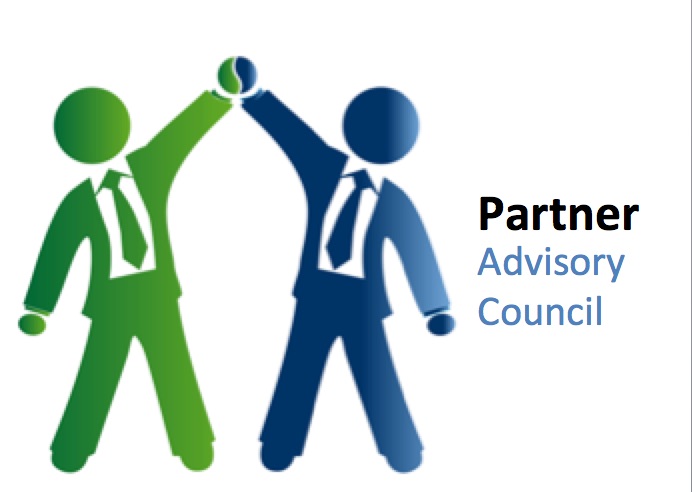Does your hi-tech B2B company host a Partner Advisory Council (or Partner Advisory Board)? If not, you may be at a serious disadvantage.
Lisa, a long-time CEO of a tech company is frustrated that channel growth had stagnated. “I need to accelerate sales through the channel, and I feel that we’ve hit a brick wall.”
Jim, SVP of global channels, laments he’s been unable to get meaningful guidance from his most strategic partners. “For us to stay competitive, I need to be able to anticipate the strategic needs of our partners and provide them with the right mix of incentive programs and enablement tools. As an organization, we don’t know how to have this conversation.”
Jim and Lisa work for two different tech companies, and have two very different partner engagement models. However, they share a business imperative: the need to engage in a strategy-level conversation with their best partners.
What is a Partner Advisory Council?
Simply put, the objective of a well-structured PAC is the following:
To create a forum where we (host company) and our most strategic partners can share and explore strategies that drive growth and greater profitability.
This is a strategic conversation, not an operations review. A PAC consists of a small group (no more than 12) of executive decisions makers at your most important channel partners. They meet with you and selected members of your executive leadership team to have a meaningful, relevant conversation. A conversation that provides you with valuable guidance; and a conversation that invites partners to collaborate and learn from each other. Typical agenda topics:
- A discussion of trends & drivers shaping the industry
- Customer expectations: What are customers asking of these partners?
- Host company strategy update: “Are we in sync with your business expectations?”
- Partner priorities: Where are these partners making investments over the next 3 years?
- Program best practices: What programs (from any vendor) work best for your team, and why?
- Enablement success factors: What are your expectations for pre- and post-sales enablement?
- Partner operations best practices: A “day in the life” discussion on how partners really work
- Exploration: How can we (the host company) help you succeed?
- What can we do to better support your ability to position, sell, and implement our solutions?
Here’s what not on the list:
- Host company product, program, or service updates
- Partner training
- Operational mechanics (such as how rebates are processed)
- One-on-one partner reviews
But wait. These partners compete with each other, right?
Maybe. The fact of the matter is that we live in a complex world. Today’s competitors are tomorrow’s partners. And vice versa. That does not mean you shouldn’t have the conversation. But it does mean you need to be extra careful in how you set up your PAC, who you invite, and how you set expectations for the agenda. (I’ll cover some of these best practices in future blog posts.) Notice that the list of typical topics are high-level business focused. At no time do we ask partners to share their “secret sauce” or reveal their competitive advantage. Everyone in the room has one thing in common: their relationship with you. That’s what makes a PAC so valuable for gathering some qualitative guidance.
3 Reasons why you need a PAC
1. You don’t know what you don’t know.
PACs explore the future, not the present. Sure, your team has lots of conversations with your partners, but I’m willing to bet they are of an operational nature. Your channel team is focused on winning business today. They are (probably) not interested in looking down the road and anticipating future needs. A PAC is a perfect venue to discussing trends and drivers and brainstorming the implications for your partners’ business models 3 years from now. With that vision in mind, you will have an opportunity to shape your own future plans to ensure you stay relevant to these partners.
2. You are missing an opportunity for gathering so qualitative directional guidance on your programs and sales enablement tools.
The PAC in no way replaces the need for one-on-one conversations or online surveys that collect input from your entire partner base. Your PAC provides you with some additional context. For example, Jim discovered that his partners were failing to engage his team because there were “just too many programs”. As a group, his PAC advised Jim to “focus on fewer programs, not more programs.” This was eye-opening because during this dialog the partners shared the reasons why this was important to them. He discovered secrets to driving partner behavior and where he could make some quick changes for immediate benefit.
3. It will help you drive your competitive advantage.
PACs (like their counterpart, Customer Advisory Boards) are becoming a standard strategic imperative for many hi-tech companies. The PAC provides a unique opportunity to strengthen relationships and to get to know key decision makers better within your partner base. Doing so creates strong affinity and “stickiness” that can make up for a future missed step or a product failure. People make decisions, not companies. And when people know who you are and that you care enough to ask about their business and to ask for their advice, they will stick with you. When all else becomes commoditized, your relationship may be your only long-lasting competitive advantage.
For more on PAC best practices, tools, engagement techniques, or just to pick my brain, I invite you to contact me at mikeg@kickstartall.com.
Mike Gospe runs KickStart Alliance‘s Advisory Board practice. He and his team of executive leaders have been guiding hi-tech companies to improve the quality of their customer and partner executive-level meetings since 2002.

